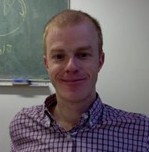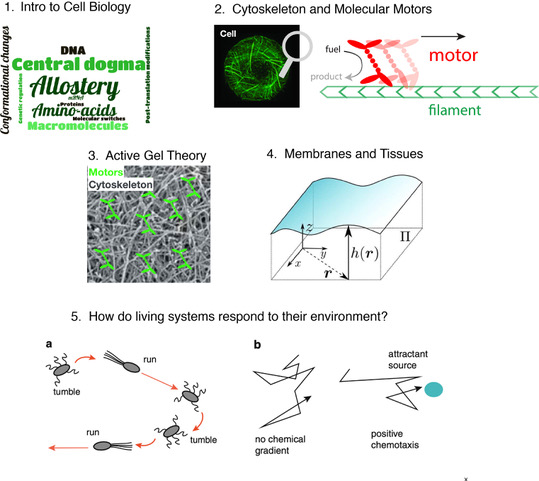Elective courses, M2 First semester, courses
Biophysics
To motivate how physics can give insight into — and also get insight from — living systems, consider how an organism develops. Yes, genetics is important, but how a homogeneous embryo breaks symmetry to become a developed being involves collective motions from the sub-cellular to the organism scale. As a result, modern biophysics borrows and has helped to advance concepts from nonlinear physics, soft matter, and non-equilibrium statistical physics.
In this course we will focus on cell (and some tissue) biophysics, but will also delve into how organisms respond and adapt to their surroundings. We will emphasize throughout how intrinsically driven chemical reactions and molecular changes can give rise to out of equilibrium macroscopic responses. The course will broken down into five chapters, as illustrated in the figure.
In this course we will focus on cell (and some tissue) biophysics, but will also delve into how organisms respond and adapt to their surroundings. We will emphasize throughout how intrinsically driven chemical reactions and molecular changes can give rise to out of equilibrium macroscopic responses. The course will broken down into five chapters, as illustrated in the figure.
References:
- “Physical biology of the cell” by R. Phillips, J. Kondev, J. Theriot, and H. Garcia (Garland).
- “Biophysics: Searching for principles” by W. Bialek (Princeton)
- “Active gel physics” by J. Prost, F. Jülicher, and J.-F. Joanny, Nature Physics 11, 111-117, (2015)
- “Stochastic processes in cell biology” by P. Bressloff (Springer)
 Andrew Callan-Jones
Andrew Callan-Jones
(Université Paris Cité)

Comments are closed





